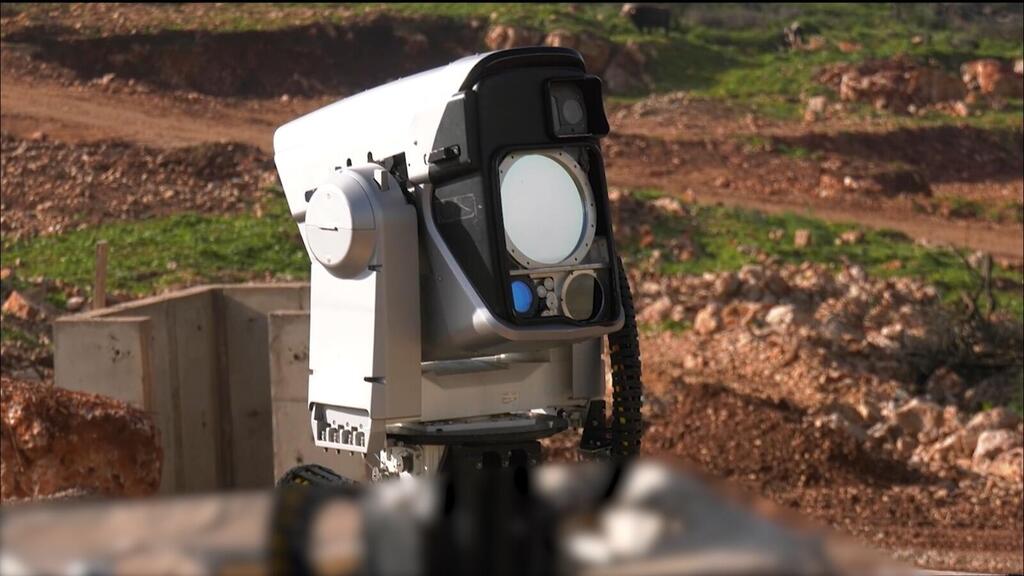Israel’s defense establishment is preparing to introduce one of its most significant technological advancements to date: the Iron Beam laser-based air defense system. As it moves into operational use, the system is expected to mark the beginning of a new era on the battlefield. In its initial phase, Iron Beam will be capable of intercepting short-range threats—including rockets, mortars, and drones—within a 10-kilometer radius. These are threats that currently require costly missile interceptors.
Simultaneously, Israel’s defense industries are already working to extend the range and power of laser-based systems. Elbit Systems is developing capabilities to launch them from aircraft or drones that will fly above the cloud layer, thus enabling cheap and quick neutralization of ballistic missiles and even hypersonic missiles that are capable of flying at a speed of at least five times the speed of sound.
( Iron Beam laser-based air defense system)
Just last week, Elbit raised nearly $500 million in a Wall Street offering to expand its operations in the European market—where demand for advanced weapons remains high amid the ongoing war in Ukraine—and to accelerate its airborne laser development. Elbit CEO Bezhalel (Butzi) Machlis previously told Calcalist that the company envisions a future portfolio of energy-based defense systems, potentially operated from space.
The development of high-energy laser weapons represents a historic shift in modern warfare. For decades, militaries have relied on conventional systems—missiles, tanks, aircraft, artillery—gradually upgraded but fundamentally unchanged. The introduction of powerful laser systems signals the emergence of an entirely new class of weaponry that is expected to play an increasingly central role in future conflicts.
(Watch an interception by the Iron Beam laser-based air defense system)
Israel has positioned itself at the forefront of this revolution, achieving breakthroughs in laser defense that have eluded even major global powers. That technological lead gives Israeli companies a competitive edge in the global defense market, but it also presents a new challenge: staying ahead.
Countries like China and Iran are investing heavily in laser capabilities, hoping to close the gap and undermine Israel’s advantage. In the near future, Israeli defense firms may find themselves not only developing laser interceptors, but also systems designed to counter enemy lasers.
At the same time, defense officials caution against public overconfidence. After more than 600 days of multi-front conflict, Israelis are still instructed to seek shelter during missile attacks from Yemen and rocket barrages from Gaza. “Lasers won’t solve all our problems or neutralize every threat,” said Brig. Gen. (res.) Ran (Ranko) Kochav, former head of the Israeli Air Force’s Air Defense Division.
1 View gallery


Iron Beam laser defense system is manufactured by Rafael
(Photo: IDF Spokesperson's Unit)
A major limitation is weather: heavy cloud cover, fog, or sandstorms can scatter laser beams, rendering them ineffective. However, Rafael CEO Yoav Turgeman says that recent technological breakthroughs may soon mitigate some of those challenges.
Another hurdle lies in Iron Beam’s ability to respond to large-scale salvos of rockets launched at Israel. It remains unclear how effectively a laser system can target multiple incoming rockets at once. Laser interception involves locking a beam onto a target long enough to heat and disable it mid-air, causing it to fall without detonating. In this sense, Iron Beam is not a replacement for Iron Dome but a complementary layer in Israel’s multi-tiered defense architecture—both systems are developed by Rafael.
Get the Ynetnews app on your smartphone: Google Play: https://bit.ly/4eJ37pE | Apple App Store: https://bit.ly/3ZL7iNv
Defense Minister Israel Katz, who took office in November, has enthusiastically promoted Iron Beam’s operational trials during the current war, though the decision to fast-track development was made years earlier by then-defense minister Avigdor Liberman. Prior to Katz’s tenure, the Defense Ministry issued a roughly 2 billion shekel contract to Elbit and Rafael to complete Iron Beam development and begin acquiring initial units.
Much of the funding for Rafael’s laser generators comes from a special U.S. aid package secured in the final months of President Joe Biden’s term. That multi-billion-dollar grant was earmarked for Israel to procure interceptors for systems like David’s Sling, Iron Dome and laser-based defenses.
While not a panacea, the operational deployment of laser weapons places Israel at the cutting edge of military innovation—and may, in time, reshape how nations defend against airborne threats.

